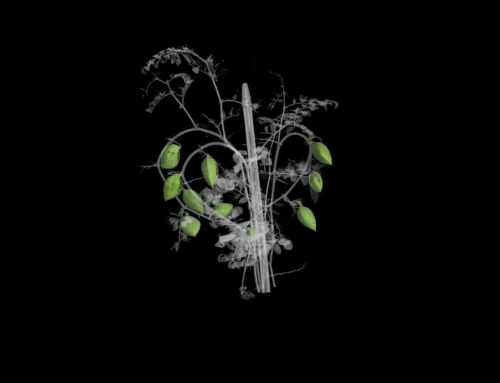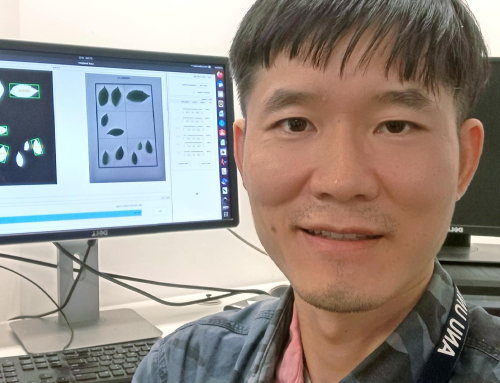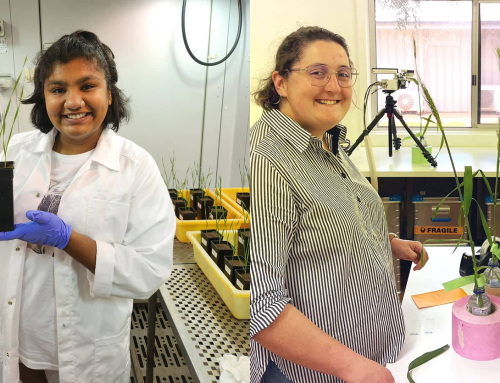The Australian Plant Phenomics facility team is pleased to welcome visiting scientist Sudhir Kumar, Ph.D, from the Indian Council of Agricultural Research (ICAR) at the Indian Agricultural Research Institute.
Dr Kumar, who is visiting The Plant Accelerator® in Adelaide, is learning from the team of experts about their experience in using a conveyor-based imaging system to capture, analyse and interpret growth data.
Dr Kumar explains that the team at ICAR have been phenotyping wheat plants to dissect key traits like water use efficiency (WUE) and nutrient use efficiency (NUE). They have amassed a large volume of images with visible, infrared , near infrared, fluorescence, and hyperspectral cameras.
“We can extract some basic traits from the images, but there is enormous potential for the data to give us more insight into many important plant traits in a time-series manner,” he says.
To build on the knowledge he has already acquired at ICAR, Dr Kumar will spend 50 days with the specialists at The Plant Accelerator® in order to further develop ICAR’s image and data analysis pipelines and learn to dissect complex traits for abiotic stress tolerance.
His focus will be on learning more about the applications and interpretation of hyperspectral and fluorescence imaging data.
“The expertise on staff at The Plant Accelerator® and the Canberra nodes will be really helpful for learning more about these sensors and their potential to help us get more specific information from hyperspectral and fluorescence data,” Dr Kumar says.
“I would like to learn from their advanced expertise in using plant phenotyping imagery to dissect abiotic stresses like heat, salinity, and drought.
“I also want to find ways of further developing ICAR processes for high throughput image segmentation, feature extraction, and improved data analysis, so we can generate more meaningful conclusions from our experiments.”
Scientific Director of The Plant Accelerator® Associate Professor Bettina Berger says The Plant Accelerator® team is happy to share their experience and workflows.
“We have very similar phenotyping infrastructure and our team has developed analyses approaches over many years,” she says.
“Our team welcomes the collaboration as we are always working to build our international relationships and contribute to the phenotyping community.”






